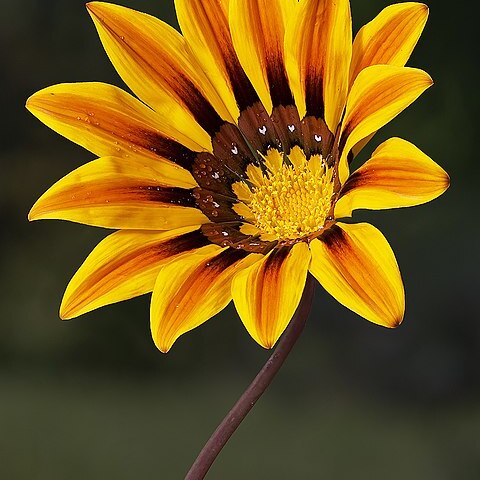Perennial herbs; stems trailing or erect; latex milky. Lvs in rosettes, or alternate on stems, pinnatifid, lobed, or entire. Capitula axillary, solitary, on long peduncles. Involucral bracts fused at base to form a cupule, in 2-3 series, similar in all rows. Receptacle flat, alveolate, ciliate; scales 0. Outer florets ligulate, sterile. Disc florets ☿. Achenes obovoid to obconic or turbinate, without furrows. Pappus of 2 rows of linear-subulate toothed scales, the rows c. equal in length.
Disk-florets hermaphrodite, numerous, corollas yellow, infundibuliform; anther bases sagittate, shortly mucronate-acuminate; style branches linear; achenes narrowly turbinate, villous with hairs exceeding or ± equalling the pappus; pappus of biseriate subequal narrow delicate accrescent scales, at first difficult to distinguish from the ovary hairs, the outer pappus scales sessile, the inner scales shortly stipitate.
Ray-florets uniseriate, neuter, without staminodes; corollas mostly yellow with rays sometimes whitish or orange inside and greenish or reddish-striped outside, sometimes with a dark spot at the base, strap-shaped ascending-erect; achenes wanting.
Phyllaries connate below into a deeply cup-shaped ± campanulate involucre, sometimes ± obconic; free parts in 2–3 rows inserted on the rim of the connate part, with none or few scattered on the fused portion.
Leaves basal and crowded, or alternate, araneose or glabrescent on the upper surface, white felted-araneose beneath, ± linear to oblanceolate or obovate, entire or pinnatilobed to pinnatifid.
Perennial herbs with woody rootstocks, (rarely annual herbs or dwarf subshrubs with woody branches).
Capitula heterogamous, radiate, solitary on scapes or terminal on the stem and branches.
Plants scapose, or with suberect to decumbent leafy stems.
Receptacle ± shallowly alveolate.

